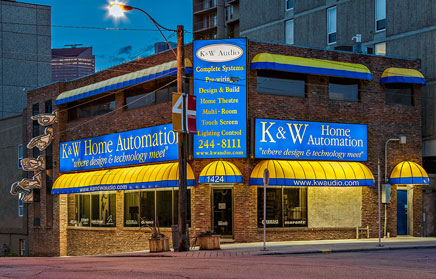TIP# 30:
For years now, audiophiles and music lovers have been able to agree on one thing. If we want “state of the art” sound, we must have really big (expensive) speakers. Fortunately, technology has now delivered us from having to buy huge speakers to get better sound.
In the past, it was accepted that in order to generate deep bass at loud volumes, big drivers were necessary (hence large boxes). However, big speakers with their big boxes have definite sonic drawbacks. Speaker manufacturers have long since understood that, when designing a speaker, the larger the speaker cone the stiffer the cone material must be, this is to prevent the material from buckling during operation. The same rule applies in making the speaker box, if we make it big it must be reinforced on the inside to make it stiff and rigid, again to prevent flexing. These design parameters increase both the size and expense in the manufacture the speakers, not to mention the extra weight!
Unfortunately, with all this extra mass we throw out any chance of getting good transient response (speed), and high efficiency from these speakers. Designers have wrestled with this problem for years, with solutions often compounding the problems. This is one of those situations where, when we follow the rules in trying to improve the speakers’ performance, we can actually make things worse. As we attempt to reduce resonance or box vibration, by reinforcing and strengthening the speaker box, the enclosure increases in mass and thus creates an even larger resonance. Further, as the whole structure increases in size, the image and sound stage get worse, not better, and we spiral into even more problems.
It’s time for a change – technology to the rescue!
The underlying design problem with all big old speakers is mass related resonance. Because of the resonance contained within the speaker itself, the voltage and current get out of phase with each other (or may even work against each other) in the wavefront produced by the speaker. What this means is, that while we measure the bass output of a speaker on an oscilloscope, our ears do not receive the two components of the wavefront simultaneously, thus missing the visceral impact of the bass. Just one instance of specifications not relating to how the unit sounds in real life.
Some modem speaker manufacturers have spent millions of dollars on a wide variety of test equipment. The initial idea was simply to understand the various components of a sound speaker manufacturing philosophy (no pun intended). Over the years they have been able, with ever improving computer aided designs, to create specific designs in mass and shape and small size. These designs do not allow the averse wavefronts found in earlier designs to propagate, and can actually use the specific resonance of a cabinet to enhance the output at a desirable frequency. What all that means is that with this high tech R & D, good speaker makers can now make a small speaker sound better than those big old wogida 9000 monitors of the Seventies and Eighties.
There are a number of these new design small speakers available, with small bass speakers and the latest generation crossovers, which virtually eliminates a host of problems associated with large speakers. Big sound and deep bass is available with small loudspeakers, along with cost reductions as an added bonus. Also, with smaller speakers comes ease of placement, not available with large speakers, and the additional appeal of having speakers that almost disappear into the room decor.


